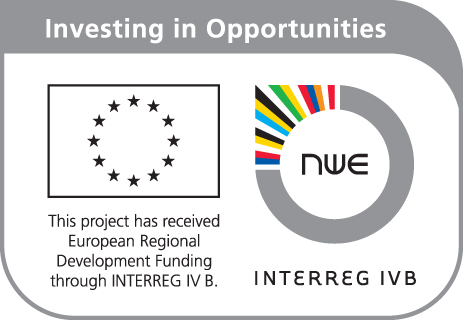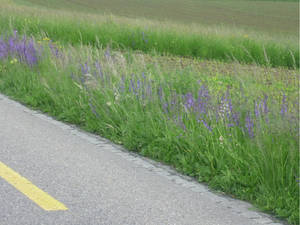
The PROGRASS® idea

The EU-project COMBINE focuses on abandoned urban, natural and agricultural areas of Northwest Europe. By the innovative PROGRASS® approach previously waste biomass will be utilised for energy production. A large variety of grassland sites are suitable for this approach: semi-natural grasslands, set-aside meadows, road- and railroad-side grass verges, but also other types of green cut can be processed. Only a fraction of the available biomass can be used in animal feeding.
For the protection of wildlife, the ecologically most valuable, semi-natural areas can be mowed only late in the year. Due to the late mowing, the green cut is less suitable for animal feeding or for use in biogas plants. However, a further decrease of agricultural activities could threaten the open character of many European grasslands and would favour a conversion to scrub-lands.
COMBINE helps to conserve the semi-natural character of the these grasslands by converting the green cut into a profitable energy resource which will stimulate further extensive cultivation of the areas by local farmers. Usually the biomass obtained by harvesting extensively used grasslands late in the year contains a large fraction of fibrous and ligneous materials. Such kind of biomass is less suitable for animal feeding. Utilization in biogas plants is inefficient since the material is only poorly digestible and the gas yield would be low. It is also less suited for combustion due to the high ash and nitrogen contents.
These problems can be solved by the innovative IFBB technology (integrated generation of solid fuel and biogas from biomass) which is the heart of the PROGRASS® approach to utilise biomass from grasslands for distributed energy production. During the COMBINE project, the processing of roadside green-cut will be analysed to ensure the absence of contamination by hydrocarbons and heavy metals. In addition, the project provides efficient and standardised methods for harvesting roadside verges and for separating sand from the green cut.
Basic prerequisites for the distributed production of bio-energy by the PROGRASS® approach are:
Availability, harvest yields of semi-natural and other grassland sites.
Harvesting feasibility of grassland sites (technical and meteorological requirements, accessibility of sites).
Site location in relation to the bio-energy plant, affecting transportation costs.
Involvement of stakeholders (farmers, local administration, etc.) in the implementation process.
Innovative capacity of the local agricultural community.
Limited market for mature grass as animal feed (large amounts of fibrous contents, low degree of local cattle farming).
Availability of nearby pellet burning furnaces, demand for grass pellets as solid fuel.
Subsidies for grassland management and production of bio-energy.
Willingness of farmers, energy suppliers and landscape management authorities to carry risks and to invest
